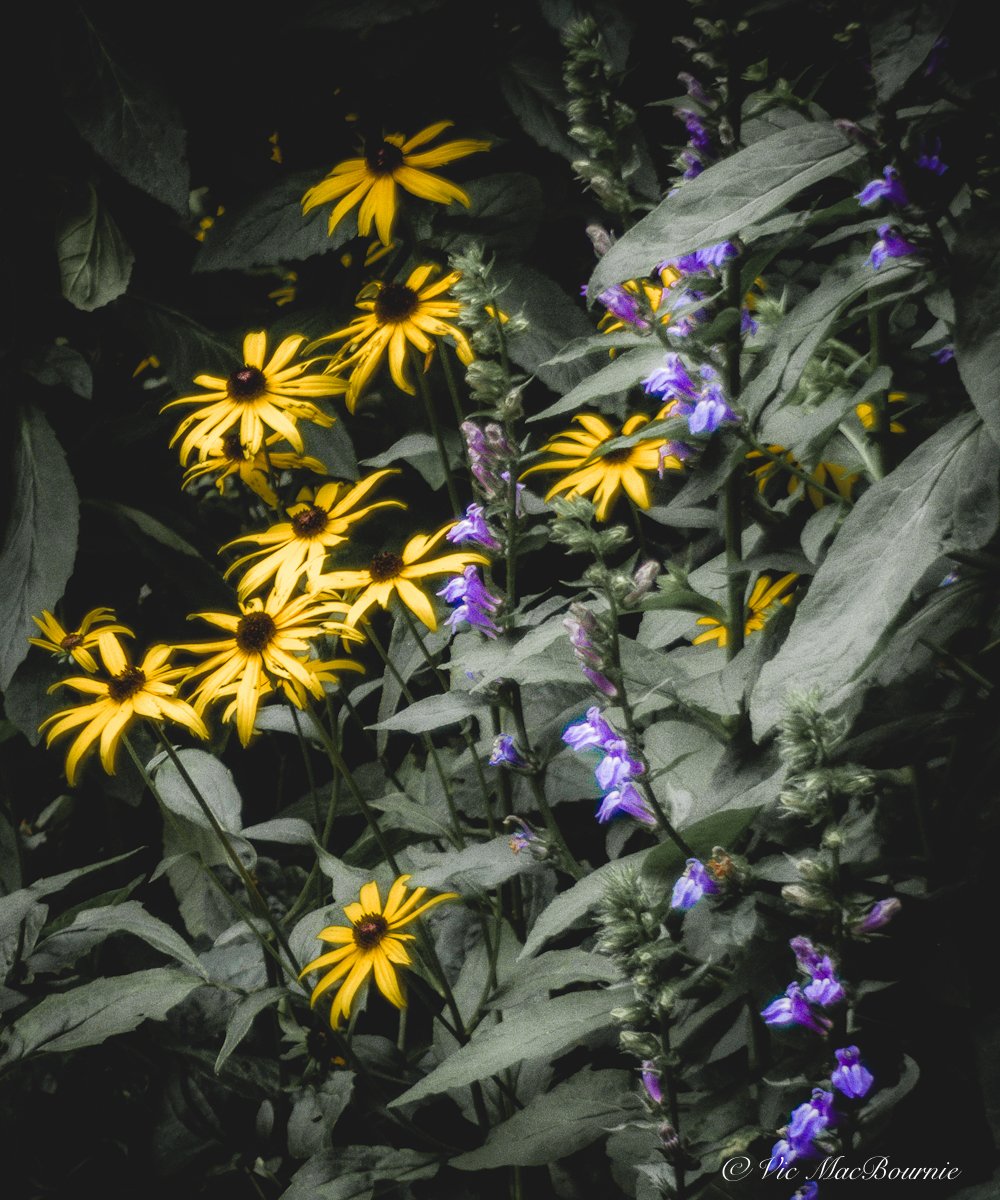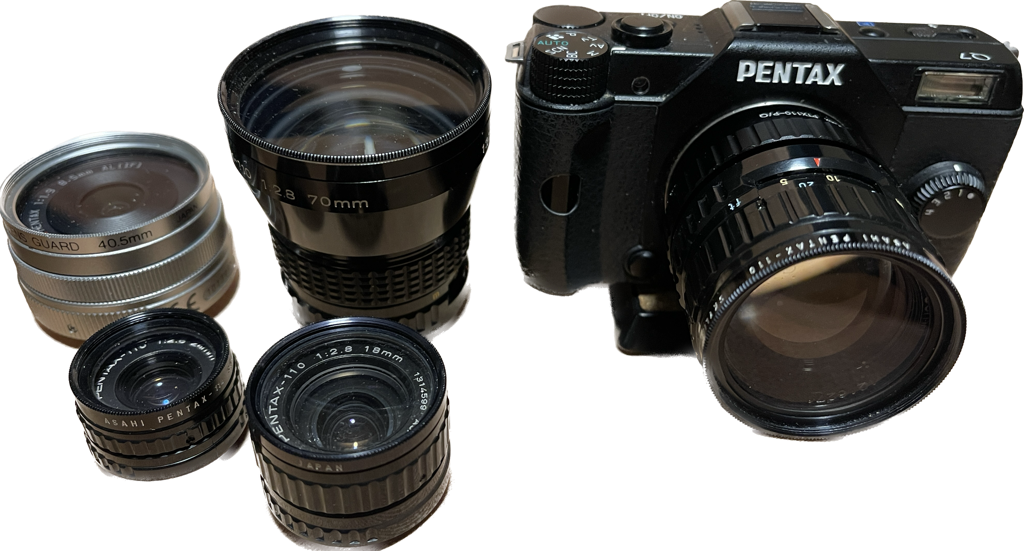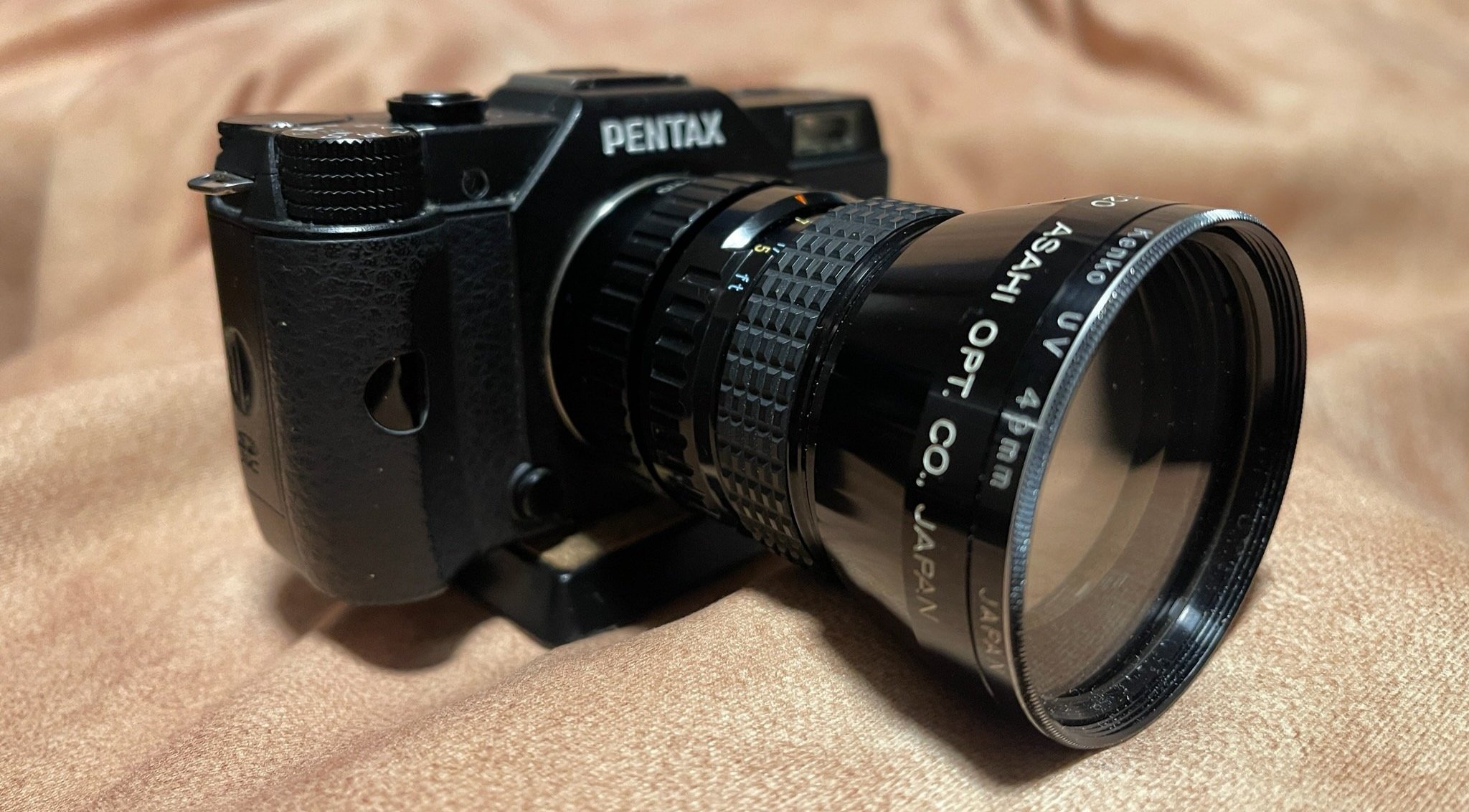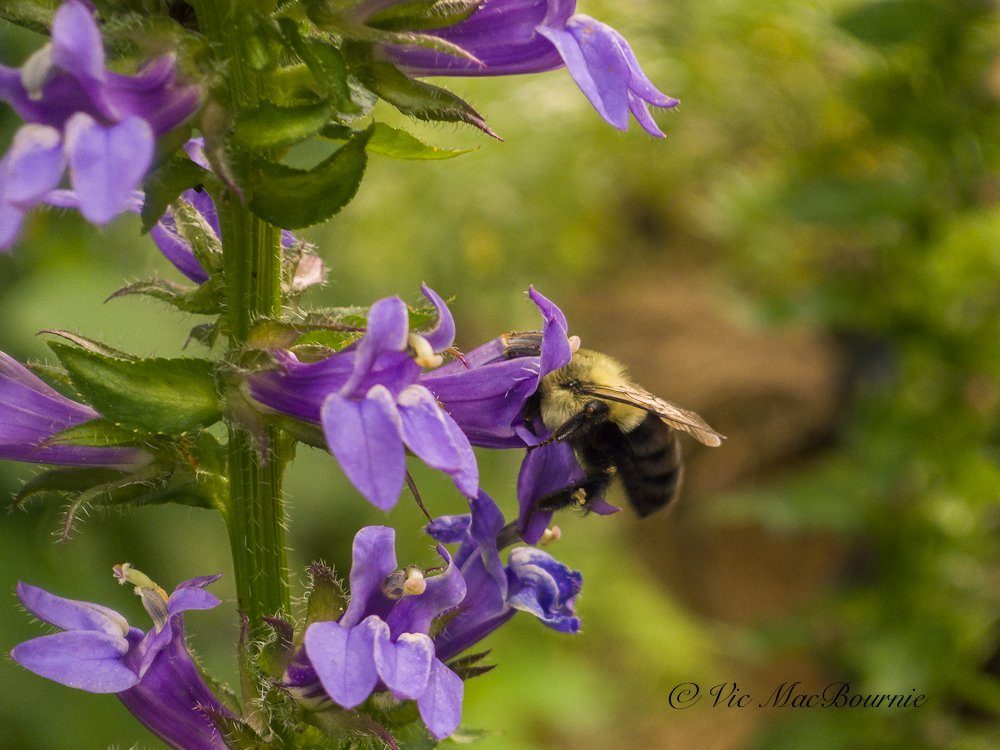Focus on vintage Pentax 110 lenses on the Pentax Q
The 110 lenses also fit micro four thirds and fujifilm cameras
No one could blame you if you thought the vintage Pentax Auto 110 lenses were made for the more modern Pentax Q line of cameras.
It’s just that 46 years ago, no-one would have dreamed that a miniature digital camera would even exist let alone continue to be so popular today.
These exquisite, tiny, almost miniature 110 lenses could not be more perfect for the Pentax Q line of cameras unless, of course, they offered full auto focus capabilities. However, even the Pentax “Toy” lenses, – the wide angle, telephoto and fisheye lenses – made especially for the Q series – do not offer auto focus capabilities.
For more on using the Auto 110 lenses on both the original film camera and the Pentax Q series of cameras, be sure to check out my post on shooting B&W film and digital using the Original Auto 110 and the Pentax Q.
So, the 18mm, 24mm, 50mm and the outstanding 70mm Pentax 110 lenses are almost too good to be true for Pentax Q users. All that is needed is a simple, inexpensive adapter to convert the lens. These adapters to convert the 110 lenses are also available for Fuji FX X-Mount camera X-PRO2 X-E1 X-E2 X-A2 X-M1 X-T3 X-S10 etc.
The build quality of these vintage lenses is also outstanding. Although the first three are made of plastic, it’s not your everyday plastic found in many of today’s inexpensive lenses.
These are extremely solid lenses that feature weighted almost perfectly silky focus.
• Be sure to check out my full post on using the 07 Pentax Mount Shield Lens on the Pentax Q.
Can Pentax 110 lenses be used on other camera systems?
Just by adding another simple and inexpensive adapter, these vintage lenses can even be used with Micro 4/3rd cameras like those available from Olympus and Panasonic brands.
In fact, the sensors in the Micro 4\3rd cameras fit the rear element of these lenses almost perfectly, meaning there is no lens vignetting.
When used with these camera systems, the crop factor is only 2X meaning the 18mm becomes the equivalent of a 36mm f2.8 lens, the 24mm becomes a 48mm, the 50mm becomes a 100mm and the 70mm becomes a 140mm.
What are the crop factors of 110 lenses on the Pentax Q cameras?
If you are wondering how these lenses translate in the world of traditional 35mm on the Pentax Q series, consider the 5.35 times crop factor of the original Pentax Q and you are left with the following: 18mm = 96mm, 24mm = 128mm, 50mm = 267mm and finally the 70mm = 374mm. The same lenses on the Q7 or Q-S1 – with a larger sensor and a crop factor of 4.65 – results in the following: 18mm = 83mm, 24mm = 111mm, 50mm = 232mm, and finally 70mm = 325mm. These numbers are rounded off, but you get the idea.
All of these lenses are manual focus, fixed f2.8 lenses that do not transmit any information to or from the camera. Just set your Pentax Q on Program, Aperture or shutter priority and let it choose the proper exposure. The over and under compensation button will correct for any unusual lighting conditions.
In addition, with the proper firmware, the camera’s in-body stabilization will work on these lenses after you program the lens’s focal length into camera.
Pentax 110 70mm is a real gem
The one lens in the group that really stands out to me is the 70mm.
I am drawn to telephoto lenses anyway, so the all-metal 70mm F2.8 Pentax 110 lens that is a made-in-Japan masterpiece is by far my favourite if I need the reach. The 70mm actually translates into almost a 400mm lens (374 mm in 35mm equivalent) on the original Pentax Q.
Pentax’s exquisite, all-metal 70mm f2.8 lens from the former 110 Auto system mounted on the original Pentax Q.
The slightly swirly bokeh on the lens can be beautiful and the silky smooth focus reminds me of the old Takumars.
All this in a package that could easily slip into your coat pocket and weighs in at a mere 240 grams (Pentax Q is 80 grams, plus the 70mm 160 grams = 240 grams). This lens has 6 elements in 5 groups and even uses the traditional Pentax 49 mm filters – perfect for standard circular polarizers and even high-quality close-up lenses.
Speaking of filters. I was lucky enough to get filters mounted on the entire set I purchased on-line, but if you are looking for your own, here is a list of the filters you will require for these lenses: 18mm takes a 30.5mm filter, 24mm takes a 25.5mm filter, 50mm takes a 37.5mm and the 70mm takes a 49mm filter. Of course with step up rings you can use larger filters such as standard polarizers.
How about image quality?
The build quality, aesthetics and fun factor means little if the image quality falls short.
Some users would argue that the image quality of these lenses does fall far too short to take them serious, but others would say that, with a brilliant little hack, the image quality on these lenses can be very good to excellent.
This image of Joe Pye Weed in a natural woodland was photographed with the 24mm with the rubber washer used to create the effect of an approximately F8 lens.
Simple hack helps sharpen focus
What’s the hack that turns these soft, fixed f2.8 lenses into sharp, high-quality glass?
It involves a $1.00 rubber washer and about one minute of your time. That’s it.
If that’s too much trouble, you can always pick up a box of ring binder reinforcements, use a black sharpie to darken them, and simply stick them on the back of the lens’s plastic surround. That will turn the lenses into about an F8 lens with the accompanying greater depth of field and a significant increase in sharpness.
These images show the rubber washer inside the Q’s adapter: first image is from the back of the adapter closest to the sensor. Second image shows the rubber washer just behind where the lens connects to the adapter.
Although the ring binder reinforcements get a lot of praise on-line, the rubber washer works very well and you could create two or three with different hole sizes to give you more access to different f-stops.
Ring binder reinforcement on the back of one of the 110 lenses.
The rubber washer is simply pushed inside the adapter and sits in a concave position from the camera mount and sensor. From the back of the lens, the rubber washer sits comfortably in a convex position. (see images above).
If you want to shoot the lenses wide open, the rubber washer is extremely easy to remove from the adapter and then replaced in just a few seconds.
Anyone who thinks these lenses are not capable of achieving sharp focus might be surprised with this shot from the 18mm Auto 110 lens that clearly shows the pollen on and around the Bumble bee.
Using these lenses successfully requires the photographer to slow down.
On the above image and the one below of the bees, I hand held the camera and shot several images to get a sharp one.
However, if you are shooting landscapes, woodlands or your garden flowers, put the camera on a tripod, turn off the anti shake option, use the 2 or 4 times built-in magnifier and focus peaking on the Q to focus precisely on the LCD and use the 2 second delay timer to get the most sharpness out of these lenses.
You will be rewarded for your efforts.
Bumble bee on Blue Lobelia hand held and taken with 18mm lens with rubber washer hack.
Is lens sharpness over rated?
When it comes to lenses, there are those who consider only pin-sharp lenses as acceptable. Others, however, look for qualities in the lenses that give them a look and feel that works with their style of photography whether the lenses are tack sharp or not.
Let’s face it, most images are only ever seen these days on social media where sharpness is already compromised through the social media platform.
I consider these 110 lenses as somewhere in the middle. They are capable of creating very sharp images but the combination of having to manually focus them on the back of the LCD panel and being more than 40 years of age, makes getting tack sharp images difficult sometimes. This difficulty is only increased if you are shooting the lenses wide open at f2.8.
Even with a tripod, sharp images are not the easiest to obtain, especially since so many of us have been spoiled with autofocus lenses.
But, if you use the rubber washer or ring binder reinforcements these lenses really can shine.
The 110 lenses are fun, they fit the Q cameras aesthetic and are usually inexpensive if you can purchase them as a package.
With a little work you can create more than acceptable results, and with a little creativity, you can create masterpieces.














